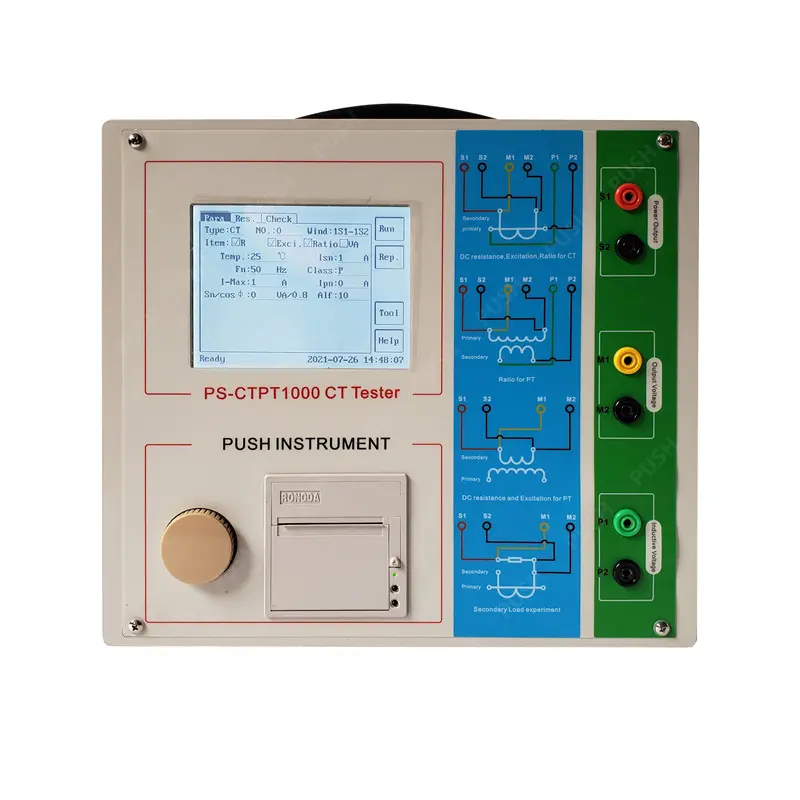Current transformers (CTs) can experience various issues and faults, which can impact the accuracy and reliability of current measurements.
Common issues and faults in CTs include:
- Shorted Turns: Shorted turns occur when the winding of the CT develops an unintended electrical connection. This fault can result in a significant increase in the secondary current, leading to inaccurate measurements.
- Open Circuits: An open circuit in the CT’s winding can result from a break in the conductor. It can lead to a lack of current flow, causing a failure to detect or measure current accurately.
- Saturation: CTs are designed to operate within a specific range of current levels. When the current exceeds this range, the CT may saturate, causing non-linearity and loss of accuracy. Saturation typically occurs in fault conditions.
- Burr Formation: During manufacturing or damage, burrs or irregularities on the CT core can lead to changes in the magnetic path, causing measurement errors.
- Core Loss: Core loss is the result of excessive core heating due to high currents, causing a shift in the magnetization curve and affecting accuracy.
- Impurities in Insulation: Contaminants or impurities in the insulation material can lead to partial discharge and insulation breakdown, affecting the CT’s reliability.
- Overvoltage: Transient overvoltages or surges can damage the insulation and winding of the CT, leading to insulation failure and measurement inaccuracies.
- Mismatched Ratio: CTs are designed with a specific turns ratio. A mismatch between the actual turns ratio and the nominal ratio can result from manufacturing errors or damage, leading to incorrect measurements.
- Polarity Reversal: A reversal in the polarity of the secondary winding can lead to incorrect phase angles and inaccurate readings in applications like protection relays.
- Ageing and Corrosion: Over time, CTs can deteriorate due to environmental factors, including moisture, temperature, and corrosion. These conditions can impact the CT’s insulation and core materials, leading to measurement errors.
- Damage during Installation or Maintenance: Physical damage during installation, maintenance, or transportation can result in short circuits, broken conductors, or misalignment of CT cores.
- Burden Impedance Mismatch: If the burden impedance connected to the secondary of the CT does not match the CT’s specifications, it can cause errors in the current measurement.
- Grounding Issues: Improper grounding or poor connections to the grounding system can result in measurement errors and safety concerns.
- Frequency Response: Some CTs have limited frequency response, which can result in measurement inaccuracies for high-frequency or transient currents.
It’s essential to regularly test and maintain CTs to detect and rectify these issues promptly. Accurate current measurements are critical for various applications,current transformer tester including power monitoring, protection, and metering, and addressing these faults helps ensure the safety and reliability of electrical systems.
What are the typical applications of current transformer testers in electrical systems?
Current transformer testers play a crucial role in ensuring the accuracy and reliability of current transformers (CTs) in electrical systems.
They are used in various applications, including:
- Routine Maintenance: Regular testing of CTs with current transformer testers is essential for preventive maintenance. By assessing the health and accuracy of CTs, potential issues can be detected and addressed before they lead to system failures.
- Commissioning and Installation: Current transformer testers are used during the commissioning process to verify that newly installed CTs meet performance and accuracy specifications. This ensures that the CTs are correctly integrated into the system.
- Safety Verification: Testing CTs helps ensure the safety of electrical systems. Accurate current measurements are critical for protective relaying and circuit breaker operation in the event of electrical faults or overloads.
- Power Quality Monitoring: In power quality analysis, CTs are used to measure current waveforms. Accurate CTs are crucial for precise power quality assessments, including the measurement of harmonics and distortion.
- Energy Management: For accurate energy monitoring and management, CTs are used to measure current for billing, load profiling, and assessing energy consumption patterns. Current transformer testers help ensure the integrity of these measurements.
- Protection Relay Testing: Protection relays rely on accurate current measurements to detect and respond to electrical faults. CT testing is essential to verify that relays operate correctly in response to fault conditions.
- Ground Fault Detection: In electrical systems, detecting ground faults is essential for safety and equipment protection. Accurate CTs are required for ground fault detection, which helps prevent electrical hazards.
- Transformer Health Assessment: CTs are used in conjunction with voltage transformers (VTs) to assess the health and performance of transformers. Current transformer testers are employed to verify the accuracy of CT measurements used in transformer diagnostics.
- Generator and Motor Protection: Generators and motors often rely on CTs for protection against overcurrent and other electrical abnormalities. Accurate CT measurements are vital to safeguard these critical assets.
- Fault Location: Current transformer testers can help locate faults in electrical circuits by assessing the performance of CTs used in fault location equipment. This is important for quick fault identification and system restoration.
- Substation Testing: In substations, current transformer testers are used to assess the performance of CTs used for voltage and current measurement, relaying, and metering.
- Operational Testing: CTs may be subject to operational testing, particularly in critical environments such as nuclear power plants, where accurate measurements are essential.
- Educational and Training: Educational institutions and training facilities use current transformer testers for teaching and training purposes to help students understand the principles of current measurement.
- Research and Development: Current transformer testers are used in research and development to evaluate and innovate CT technology, ensuring its accuracy and reliability in various applications.
The accurate performance of CTs is integral to the safety, protection, and efficiency of electrical systems. Current transformer testers are invaluable tools for ensuring that CTs perform within specified parameters and meet the demands of their intended applications.
